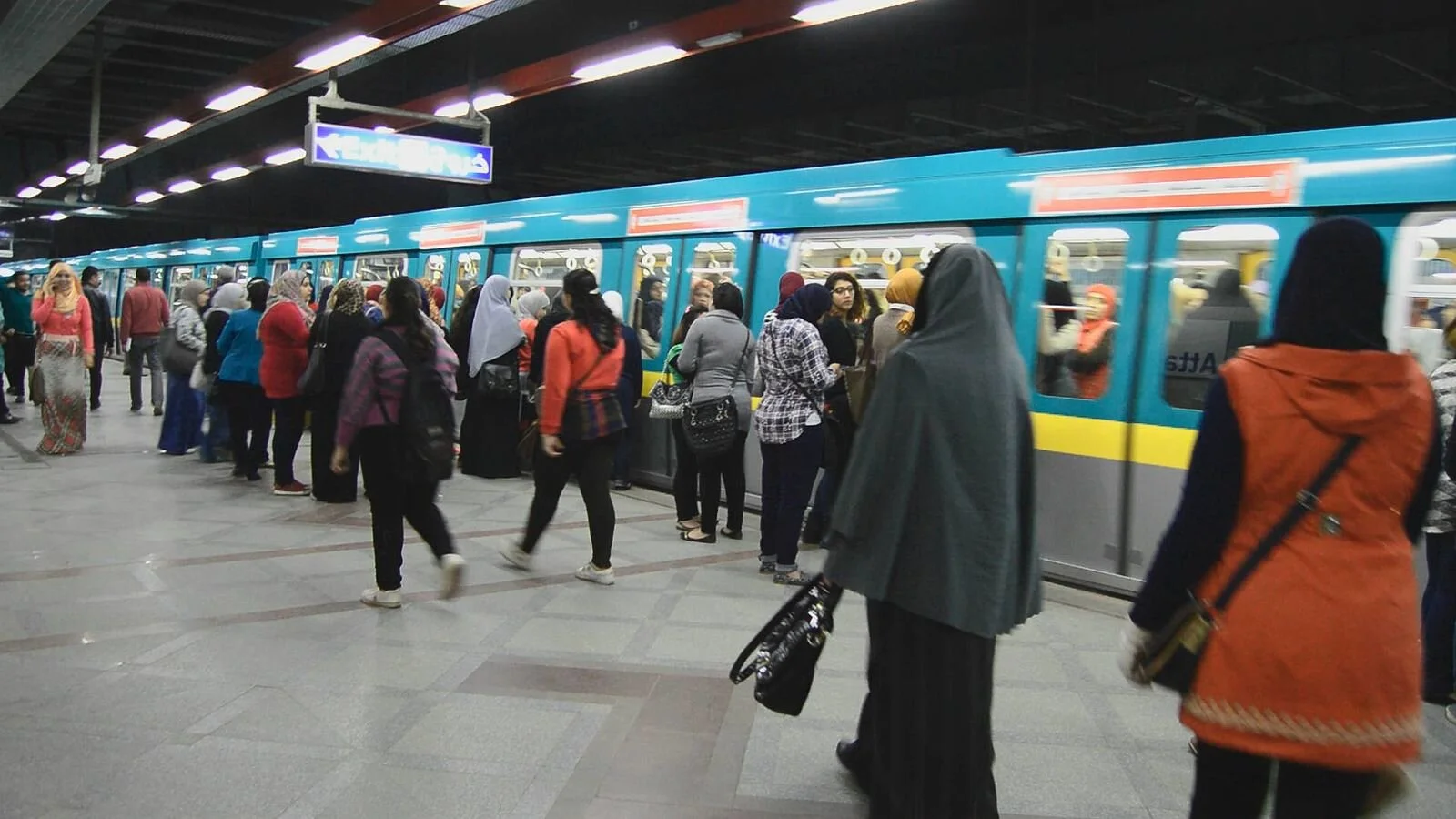How to use public transit in Cairo, part one: metro
Note: All images used in this post are Creative Commons Licensed. Click on each image to review its license.
In a city of 20 million people like Cairo, public transit is a part of everyday life. However, few tourists ever experience what it’s like to take the speedy and reliable Metro, to jump aboard a public bus, or to experience the wonderful juggle of passengers paying their fare as a microbus zooms through traffic.
There are two major types of transit in Cairo: The Metro and buses. The Metro is very straightforward and the easiest option to use. There are four different types of buses and each has its own idiosyncrasies and norms, some totally different from anything we do on public transit in the U.S., but still usable by foreigners with a little gumption and courage.
In this post we will give some quick tips and tricks on using public transit, and then we will focus specifically on how to use the Cairo Metro. Stay tuned for part two in this blog series on how to use buses in Cairo.
Experiencing public transportation in Egypt is a must for any tourist wishing to get a glimpse of what life for everyday Egyptian people is like, but it is not an experience everyone should do. Public transportation can be very crowded, hot, and smelly (except from November-April, when the heat and smell decrease significantly). Sexual harassment of women could happen in virtually every public space in Cairo, public transit included, although it happens much less when traveling in groups. We at Egypt Adventures Travel are huge advocates of travelers taking the Metro or a bus ride as part of any Egypt tour, but we also understand that all travelers have different comfort levels.
Tips and tricks
-Be confident when using public transit. It will be a different experience than using public buses and mass transit in the U.S. Just rest assured that you can and should use the metro and buses in Egypt, and assert yourself when doing so, even if you are unsure of whether you should use the back or front door, how much the fare is, or if it is ok for you to sit next to someone.
-Ask for help if you need (or want) it. Start by saying the name of your destination, and then go from there. Some Egyptians may even speak English and be able to help you get to where you need to go. Several times I have had Egyptians tell me that they are heading in the same direction, get on the bus or metro with me, pay my fare, and tell me exactly where/when to get off.
-Follow what other people are doing. This goes without saying, but if you are in doubt, look around you and do what the other riders do. If they pay their fare when they get on the bus, do the same. If they get up to offer an elderly person their seat, do the same.
-Carry small bills so that you are always ready to pay without needing change. Usually giving any bus driver five pounds (about 30 cents) should cover a trip, and the metro costs four or five pounds, depending on which station you are going to.
The Cairo Metro
We will start with the metro, since it is the easiest to use and is my most recommended option for tourists because of its similarities with mass transit options in the U.S.
The Cairo Metro has three main lines, with plans that are currently underway to expand to notable new destinations, like the airport and some important districts of the city. For now, the main line you will want to know is the Red Line (also referred to as Line 2). The Red Line is easy to take because it goes through downtown Cairo (get on at Sadat Station at Tahrir Square) and heads to a couple of important tourist destinations, like Coptic Cairo (get off at Mar Girgis Station) and Ramses Train Station (get off at El Shohadaa Station).
The other main line tourists may take, the Blue Line (or Line 1), stops downtown and also at Ramses Train Station. It goes out to Giza (but not as far as the Pyramids) and it also goes to Attaba Station, which is where you can take a Suzuki bus to Islamic Cairo and Khan El-Khalilii (more below).
Taking the Cairo Metro
Taking the Cairo Metro is similar to taking a metro anywhere in the world. Descend (or ascend) to the station, and go through a security check. Once your bag goes through a scanner and you walk through a metal detector (neither the scan nor the detector really matter--police don’t often pay attention to them anyway), continue following the flow of traffic until you get to a ticket counter.
Buying a ticket for the Cairo Metro can be an annoying and strange experience. In Egypt, folks don’t believe in lines like we do in the U.S., and often the only way to successfully get a ticket is to assertively continue moving forward to the ticket teller and thrust your hand forward with the money you need. Tickets are usually 5 pounds, so simply hold out the appropriate amount, try to make eye contact with the teller, and then hold up how many tickets you want on the other hand. If you know you will take the metro back from your destination, it can make life easier to buy two tickets—you don’t have to use the tickets you buy that same day.
After purchasing your ticket, figure out what line you need to take, what stop you need to go to, and finally what direction you need to go in to get to that station (for example, coming from downtown to Coptic Cairo, you will take the Red Line in the Helwan direction and get off at Mar Girgis Station). Follow the signage that is in English and Arabic until you get to the platform. If a train isn’t already there, don’t worry, you won’t wait longer than five minutes for the next one.
When on the platform, you may notice a group of women gathering, and you can spot “women only” signs on every platform. Each metro train has two train cars that are reserved for women. If you are a woman or your group is all women, feel free to take one of these cars. A man cannot take the car in accompaniment of a woman, however. And if you are a man accidentally find yourself getting into the women only car, don’t worry, they’ll let you know you shouldn’t be there! It has happened to me several times, so you wouldn’t be alone.
On the train
As soon as you get on the metro car, if it is one of the older cars that does not have A/C and uses non-electronic signage, I would recommend counting how many stops you need to travel to your destination. Often it is hard to read the signs at each station because they can go by quickly, and the Arabic names of the stations can be hard to match up to the English words if you hear them spoken. When in doubt, just say the name of the stop you need to go to in a questioning way, like, “Mar Girgis?”, and your fellow riders should be able to tell you if the next stop is the one you want. They may even keep an eye on you and let you know when to get off, with a smile and a wave to boot.
Much of the same etiquette that exists when taking mass transit in the U.S. applies in Egypt:
Feel free to sit in any empty seat, but if someone gets on the train who seems to need a seat more than you, graciously offer your spot
When standing, fill in the middle of the car first, and try to avoid standing by the door for long periods (if you are getting off in one or two stops, that is fine
Try to give people as much space as possible. That being said, if you can move over and create more seating room, do so.
There is not eating or drinking on the metro
Similarities aside, there will be some things on the metro that will raise your eyebrows:
Vendors are allowed to sell wares on the metro. If a vendor puts something they are selling in your lap, you don’t need to buy it. Just wait for the vendor to come back around, and politely hand it back to them.
Beggars solicit donations on the metro. You may see someone with a large growth on their head, someone with missing limbs, or someone with another apparent medical condition ask for money. They will never get in your face or single you out.
People in Egypt do not follow the etiquette of letting folks who need to exit do so before trying to board the train. Don’t be shocked if you are trying to exit and someone pushes you as they get on the train at the same time you are getting off. Sometimes you may need to push a little to board or disembark, but try to do so gently and without malice.
Once you make it off
After following the English and Arabic signs to the exit (or transferring to another line if you are doing so), make sure your ticket is handy--you will need it to leave. Put your ticket in the turnstyle, go through, and then make your way to one of the several exits that are in each station. Keep in mind that some turnstyles are electronic only and will only take mass transit cards, not tickets. These are distinguishable because they have not ticket slot on the center of the machine, just a card reader.
When you get back to the street, take a minute, take a breath, pat yourself on the back, and reflect upon your public transportation experience. Did it feel empowering? Scary? Exciting? What was similar or different from your experience using public transportation in the U.S. or other cities? Is it something you would want to do again?
Stay tuned for part two of this blog post series, when we break down the four different types of buses that can be found in Cairo and the tips and tricks for getting the most out of each one!
Do you have any questions about using the metro or other public transit in Cairo? Drop us a comment below!









